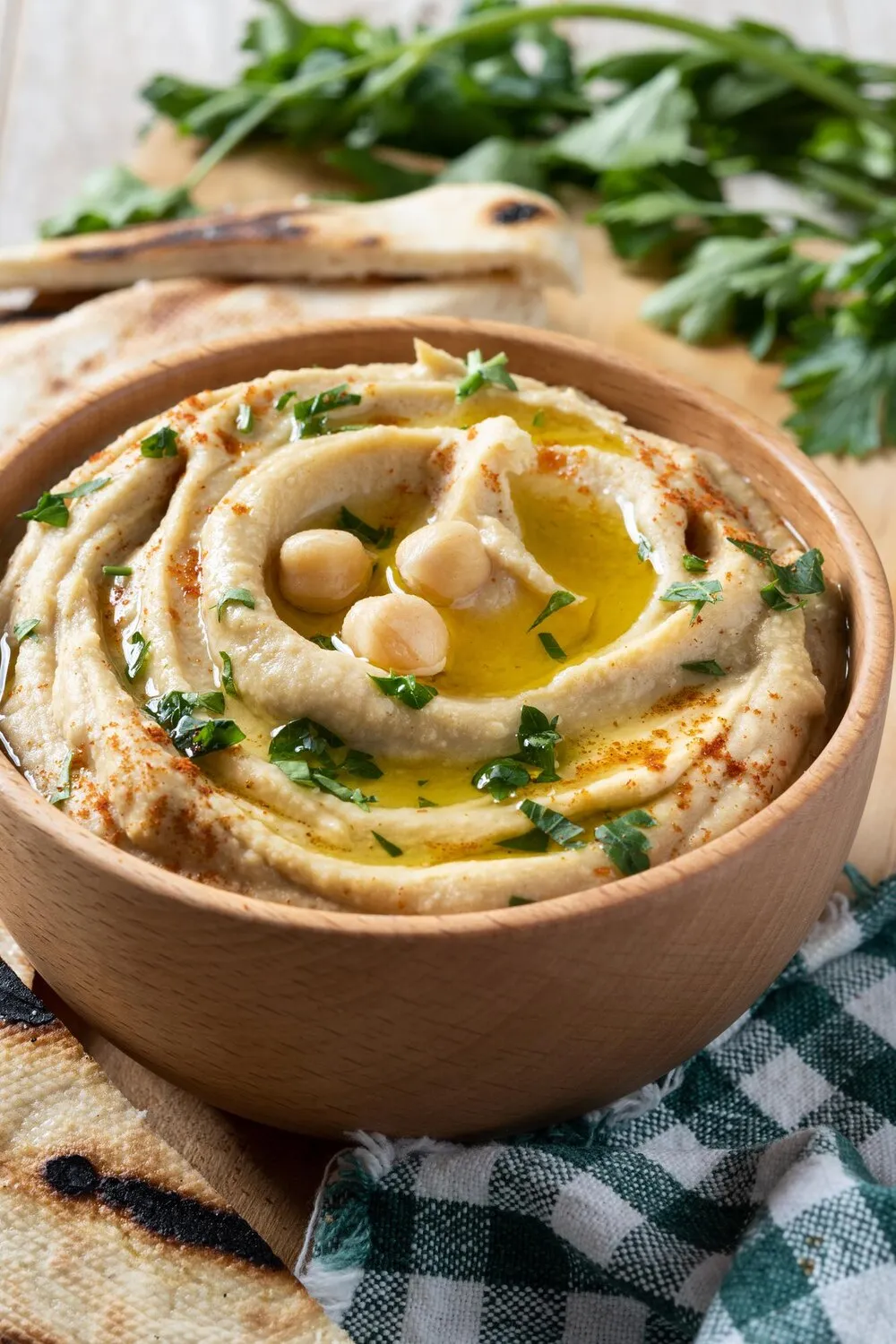
Baba Ghanoush
A dip or spread made from cooked, mashed eggplant blended with tahini, lemon juice, and garlic.
Nutrition Facts
* The % Daily Value (DV) tells you how much a nutrient in a serving of food contributes to a daily diet. 2,000 calories a day is used for general nutrition advice.
Baba Ghanoush, like many dishes in the Eastern Mediterranean, has a history that is deeply intertwined with the region's agricultural practices and culinary traditions. Eggplant, a key ingredient, was introduced to the Middle East centuries ago and quickly became a staple. Tahini, derived from sesame seeds, has also been a significant part of the diet for millennia. The combination of these ingredients, along with lemon and garlic, reflects the flavors and availability of resources in the area.
Baba Ghanoush is more than just a dish; it's a symbol of hospitality and communal dining in many Middle Eastern cultures. It's often served as part of a mezze platter, shared among friends and family, and enjoyed with pita bread or vegetables.
Mezze Culture
Baba Ghanoush is a cornerstone of the mezze, a selection of small dishes served as an appetizer in the Eastern Mediterranean and Middle East. The mezze is designed to encourage conversation and sharing among diners.
Family Gatherings
In many families, making Baba Ghanoush is a tradition passed down through generations. The recipe and preparation methods may vary slightly from household to household, reflecting personal preferences and regional influences.
Regional Variations
While the core ingredients remain the same, regional variations exist. Some versions include additions like pomegranate molasses for a touch of sweetness and tartness, while others may incorporate herbs such as parsley or mint for added freshness.
Baba Ghanoush is characterized by its smoky, creamy, and tangy flavors. The eggplant provides a subtly sweet and earthy base, while tahini contributes a nutty richness. Lemon juice adds a refreshing brightness, and garlic provides a pungent kick.
The distinct smoky flavor comes from roasting or grilling the eggplant until the skin is charred and the flesh is soft. This method also enhances the eggplant's natural sweetness. Tahini, made from ground sesame seeds, lends a creamy texture and a slightly bitter, nutty taste. Lemon juice brightens the dip, balancing the richness of the tahini and eggplant. Garlic provides a sharp, savory note that complements the other flavors. Some variations include olive oil, which adds further richness and a smooth texture, and spices like cumin or paprika for added complexity.
Smoking the Eggplant
For the best smoky flavor, roast the eggplant directly over an open flame on a gas stovetop or grill. Alternatively, you can roast it in the oven under the broiler. The skin should be charred and the flesh completely softened.
Draining the Eggplant
After roasting, allow the eggplant to cool slightly, then scoop out the flesh and drain it in a colander for about 30 minutes to remove excess moisture. This will prevent the Baba Ghanoush from becoming watery.
Tahini Quality
Use high-quality tahini for the best flavor and texture. Look for tahini that is smooth, creamy, and has a nutty aroma. Avoid tahini that is thick, dry, or bitter.
Lemon Juice Adjustment
Add lemon juice gradually, tasting as you go, to achieve the desired level of tanginess. The amount of lemon juice needed will vary depending on the acidity of the lemons.
Explore additional Vegetarian, dip dishes and restaurants
Explore Vegetarian, dipDiscover top dining spots and culinary experiences in Gent.
Explore GentLearn more about the food culture, restaurant scene, and culinary heritage of Belgium.
Explore Belgium